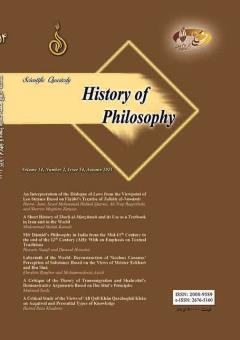Hossein Ibn Mo‘in al-Din Meybodi, nicknamed Kamal al-Din, known as Qadi, with Mantiqi as his pen-name, is one of the great figures and distinguished scientific, literary, and philosophical characters of the land of Iran. He was born in Meybod in Yazd Province in the nin
More
Hossein Ibn Mo‘in al-Din Meybodi, nicknamed Kamal al-Din, known as Qadi, with Mantiqi as his pen-name, is one of the great figures and distinguished scientific, literary, and philosophical characters of the land of Iran. He was born in Meybod in Yazd Province in the ninth century (AH). After learning the common preliminary intellectual and transmitted sciences of his time, he went to Shiraz in his youth and became a student of Dawani. Meybodi is a Muslim philosopher, an advocate of Shafi‘i school of thought, and a man of Tawalla (loving the People of the Prophet’s House). His love of the Commander of the Faithful (a) and the Pure and Infallible Household is so profound that some have considered him to be a Shi‘ite scholar. During the reign of Sultan Y‘aqub Aq Qoyunlu, he was a judge and the custodian of endowments of Yazd and its suburbs. His most important works include Sharh-i hidayah al-hikmah, Sharh-i diwan mansub bi Amir al-mu’minin (a), and Munsha’at. During the reign of Shah Isma‘il Safavi, when Mohammad Karra (ruler of Abarqu) captured the city of Yazd, Meybodi became his minister and, between 909 and 911 AH, when Shah Isma‘il recaptured Yazd, he was murdered on the King’s order. Meybodi believed that Illuminationists and Sufis (gnostics) were superior to theologians and Peripatetics and considered Peripatetic philosophy, which is based on rational deduction and reasoning, an immensely uncertain and ambiguous school which exhausts the intellect in the process of perceiving its fundamental principles. Unlike Ibn Sina, Suhrawardi, and Ibn Arabi, he was not the founder of a specific school of philosophy. However, given his accurate criticisms, investigations, and particular views regarding topics which interested theologians, Peripatetics, gnostics, and Illuminationists in the mould of a number of independent and dependent (commentaries and glosses) works, as a connecting link, he managed not only to play a significant role in developing Islamic philosophy and bringing the different philosophical trends and schools of his time together, but also become a source of inspiration for Mulla Sadra in developing the Transcendent Philosophy.
Manuscript profile


